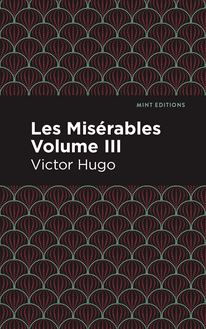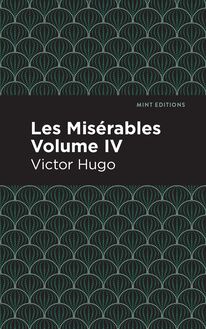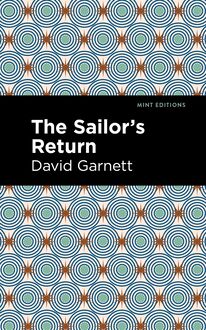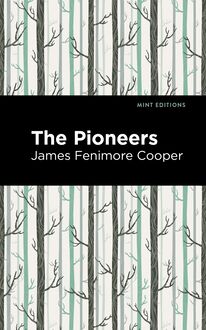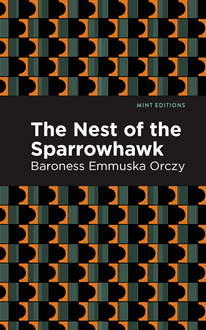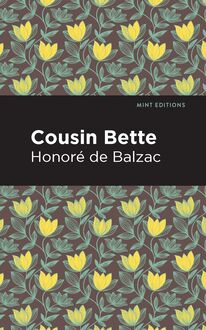-
 Univers
Univers
-
 Ebooks
Ebooks
-
 Livres audio
Livres audio
-
 Presse
Presse
-
 Podcasts
Podcasts
-
 BD
BD
-
 Documents
Documents
-
- Cours
- Révisions
- Ressources pédagogiques
- Sciences de l’éducation
- Manuels scolaires
- Langues
- Travaux de classe
- Annales de BEP
- Etudes supérieures
- Maternelle et primaire
- Fiches de lecture
- Orientation scolaire
- Méthodologie
- Corrigés de devoir
- Annales d’examens et concours
- Annales du bac
- Annales du brevet
- Rapports de stage
La lecture à portée de main
Vous pourrez modifier la taille du texte de cet ouvrage
Découvre YouScribe en t'inscrivant gratuitement
Je m'inscrisDécouvre YouScribe en t'inscrivant gratuitement
Je m'inscrisEn savoir plus
Vous pourrez modifier la taille du texte de cet ouvrage
En savoir plus

Description
Francis Osbaldistine, the son of an English merchant, had always been different than the rest of his family. With an opposing temperament and religion than his father and younger brother, Francis dreams of writing poetry, despite his father’s desire for him to go into the family business. When Francis refuses to work for his father, he is sent away to live with his uncle, on the condition that his cousin, Rashleigh, switches places with Francis in the family business. While Francis is initially happy with this arrangement, Rashleigh has a reputation for his unruliness, which he lives up to shortly after joining the business. Soon Rashleigh gets into trouble he cannot overcome on his own. Concerned for the implications this would have on the family, Francis has no choice but to travel to Scotland to clean up Rashleigh’s mess, leading to misadventures, odd strangers, and even the chance of romance. While Francis appreciates the beauty and the exciting culture of Scotland, he meets the astonishingly eccentric Rob Roy MacGregor, who has garnered quite the reputation, leading to even more hilarity and chaos. First published over two-hundred years ago in 1817, Rob Roy is among the most comical historical novels in Sir Walter Scott’s Waverly series. Set in the 18th century, during the year of the first Jacobite uprising, Rob Roy provides modern readers with invaluable insight on the social, cultural, and economical background of Scotland and England, through its excellent representation of the two nations and their citizens during a time of tension. With compelling, unforgettable characters, Rob Roy by Sir Walter Scott is as entertaining as it is fascinating. This edition of Rob Roy by Sir Walter Scott now features an eye-catching new cover design and is printed in a font that is both modern and readable. With these accommodations, this edition of Rob Roy crafts an accessible and pleasant reading experience for modern audiences while restoring the original mastery of Sir Walter Scott’s literature.
Sujets
Informations
| Publié par | Mint Editions |
| Date de parution | 14 mai 2021 |
| Nombre de lectures | 0 |
| EAN13 | 9781513285368 |
| Langue | English |
| Poids de l'ouvrage | 1 Mo |
Informations légales : prix de location à la page 0,0500€. Cette information est donnée uniquement à titre indicatif conformément à la législation en vigueur.
Extrait
Rob Roy
Sir Walter Scott
Rob Roy was first published in 1808.
This edition published by Mint Editions 2021.
ISBN 9781513280349 | E-ISBN 9781513285368
Published by Mint Editions®
minteditionbooks .com
Publishing Director: Jennifer Newens
Design & Production: Rachel Lopez Metzger
Project Manager: Micaela Clark
Typesetting: Westchester Publishing Services
C ONTENTS E DITOR’S I NTRODUCTION TO R OB R OY V OLUME I I II III IV V VI VII VIII IX X XI XII XIII XIV XV XVI XVII V OLUME II I II III IV V VI VII VIII IX X XI XII XIII XIV XV XVI XVII XVIII XIX XX XXI XXII
E DITOR’S I NTRODUCTION TO R OB R OY
I n the magnum opus, the author’s final edition of the Waverley Novels, “Rob Roy” appears out of its chronological order, and comes next after “The Antiquary.” In this, as in other matters, the present edition follows that of 1829. “The Antiquary,” as we said, contained in its preface the author’s farewell to his art. This valediction was meant as prelude to a fresh appearance in a new disguise. Constable, who had brought out the earlier works, did not publish the “Tales of my Landlord” (“The Black Dwarf” and “Old Mortality”), which Scott had nearly finished by November 12, 1816. The four volumes appeared from the houses of Mr. Murray and Mr. Blackwood, on December 1, 1816. Within less than a month came out “Harold the Dauntless,” by the author of “The Bridal of Triermain.” Scott’s work on the historical part of the “Annual Register” had also been unusually arduous. At Abbotsford, or at Ashiestiel, his mode of life was particularly healthy; in Edinburgh, between the claims of the courts, of literature, and of society, he was scarcely ever in the open air. Thus hard sedentary work caused, between the publication of “Old Mortality” and that of “Rob Roy,” the first of those alarming illnesses which overshadowed the last fifteen years of his life. The earliest attack of cramp in the stomach occurred on March 5, 1817, when he “retired from the room with a scream of agony which electrified his guests.”
Living on “parritch,” as he tells Miss Baillie (for his national spirit rejected arrowroot), Scott had yet energy enough to plan a dramatic piece for Terry, “The Doom of Devorgoil.” But in April he announced to John Ballantyne “a good subject” for a novel, and on May 6, John, after a visit to Abbotsford with Constable, proclaimed to James Ballantyne the advent of “Rob Roy.”
The anecdote about the title is well known. Constable suggested it, and Scott was at first wisely reluctant to “write up to a title.” Names like Rob Roy, Queen Mary, Queen Elizabeth, Cleopatra, and so forth, tell the reader too much, and, Scott imagined, often excite hopes which cannot be fulfilled. However, in the geniality of an after-dinner hour in the gardens of Abbotsford, Scott allowed Constable to be sponsor. Many things had lately brought Rob into his mind. In 1812 Scott had acquired Rob Roy’s gun—“a long Spanish-barrelled piece, with his initials R. M. C.,” C standing for Campbell, a name assumed in compliment to the Argyll family.
Rob’s spleuchan had also been presented by Mr. Train to Sir Walter, in 1816, and may have directed his thoughts to this popular freebooter. Though Rob flourished in the ’15, he was really a character very near Scott, whose friend Invernahyle had fought Rob with broadsword and target—a courteous combat like that between Ajax and Hector.
At Tullibody Scott had met, in 1793, a gentleman who once visited Rob, and arranged to pay him blackmail.
Mr. William Adam had mentioned to Scott in 1816 the use of the word “curlie-wurlies” for highly decorated architecture, and recognised the phrase, next year, in the mouth of Andrew Fairservice.
In the meeting at Abbotsford (May 2, 1817) Scott was very communicative, sketched Bailie Nicol Jarvie, and improvised a dialogue between Rob and the magistrate. A week later he quoted to Southey, Swift’s lines—Too bad for a blessing, too good for a curse,—which probably suggested Andrew Fairservice’s final estimate of Scott’s hero,—“over bad for blessing, and ower gude for banning.”
These are the trifles which show the bent of Scott’s mind at this period. The summer of 1817 he spent in working at the “Annual Register” and at the “Border Antiquities.” When the courts rose, he visited Rob’s cave at the head of Loch Lomond; and this visit seems to have been gossiped about, as literary people, hearing of the new novel, expected the cave to be a very prominent feature. He also went to Glasgow, and refreshed his memory of the cathedral; nor did he neglect old books, such as “A Tour through Great Britain, by a Gentleman” (4th Edition, 1748). This yielded him the Bailie’s account of Glasgow commerce “in Musselburgh stuffs and Edinburgh shalloons,” and the phrase “sortable cargoes.”
Hence, too, Scott took the description of the rise of Glasgow. Thus Scott was taking pains with his preparations. The book was not written in post-haste. Announced to Constable early in May, the last sheet was not corrected till about December 21, when Scott wrote to Ballantyne:—
D EAR J AMES ,—
With great joy I send you Roy.
’T was a tough job,
But we’re done with Rob.
“Rob Roy” was published on the last day of 1817. The toughness of the job was caused by constant pain, and by struggles with “the lassitude of opium.” So seldom sentimental, so rarely given to expressing his melancholy moods in verse, Scott, while composing “Rob Roy,” wrote the beautiful poem “The sun upon the Weirdlaw Hill,” in which, for this once, “pity of self through all makes broken moan.”
Some stress may be laid on the state of Sir Walter’s health at this moment, because a living critic has tried to show that, in his case, “every pang of the stomach paralyses the brain;” that he “never had a fit of the cramp without spoiling a chapter.” 1 “Rob Roy” is a sufficient answer to these theories. The mind of Scott was no slave to his body.
The success of the story is pleasantly proved by a sentence in a review of the day: “It is an event unprecedented in the annals either of literature or of the custom-house that the entire cargo of a packet, or smack, bound from Leith to London, should be the impression of a novel, for which the public curiosity was so much upon the alert as to require this immense importation to satisfy.”
Ten thousand copies of a three-volume novel are certainly a ponderous cargo, and Constable printed no fewer in his first edition. Scott was assured of his own triumph in February 1819, when a dramatised version of his novel was acted in Edinburgh by the company of Mr. William Murray, a descendant of the traitor Murray of Broughton. Mr. Charles Mackay made a capital Bailie, and the piece remains a favourite with Scotch audiences. It is plain, from the reviews, that in one respect “Rob Roy” rather disappointed the world. They had expected Rob to be a much more imposing and majestic cateran, and complained that his foot was set too late on his native heather. They found too much of the drover and intriguer, too little of the traditional driver of the spoil. This was what Scott foresaw when he objected to “writing up to a title.” In fact, he did not write up to, it, and, as the “Scots Magazine” said, “shaped his story in such a manner as to throw busybodies out in their chase, with a slight degree of malicious finesse.” “All the expeditions to the wonderful cave have been thrown away, for the said cave is not once, we think, mentioned from beginning to end.”
“Rob Roy” equals “Waverley” in its pictures of Highland and Lowland society and character. Scott had clearly set himself to state his opinions about the Highlands as they were under the patriarchal system of government. The Highlanders were then a people, not lawless, indeed, but all their law was the will of their chief. Bailie Nicol Jarvie makes a statement of their economic and military condition as accurate as it is humorous. The modern “Highland Question” may be studied as well in the Bailie’s words as in volumes of history and wildernesses of blue-books. A people patriarchal and military as the Arabs of the desert were suddenly dragged into modern commercial and industrial society. All old bonds were snapped in a moment; emigration (at first opposed by some of the chiefs) and the French wars depleted the country of its “lang-leggit callants, gaun wanting the breeks.” Cattle took the place of men, sheep of cattle, deer of sheep, and, in the long peace, a population grew up again—a population destitute of employment even more than of old, because war and robbery had ceased to be outlets for its energy. Some chiefs, as Dr. Johnson said, treated their lands as an attorney treats his row of cheap houses in a town. Hence the Highland Question,—a question in which Scott’s sympathies were with the Highlanders. “Rob Roy,” naturally, is no mere “novel with a purpose,” no economic tract in disguise. Among Scott’s novels it stands alone as regards its pictures of passionate love. The love of Diana Vernon is no less passionate for its admirable restraint. Here Scott displays, without affectation, a truly Greek reserve in his art. The deep and strong affection of Diana Vernon would not have been otherwise handled by him who drew the not more immortal picture of Antigone. Unlike modern novelists, Sir Walter deals neither in analysis nor in rapturous effusions. We can, unfortunately, imagine but too easily how some writers would peep and pry into the concealed emotions of that maiden heart; how others would revel in tears, kisses, and caresses. In place of all these Scott writes:—
She extended her hand, but I clasped her to my bosom. She sighed as she extricated herself from the embrace which she permitted, escaped to the door which led to her own apartment, and I saw her no more.
Months pass, in a mist of danger and intrigue, before the lovers meet again in the dusk and the solitude.
“Mr. Francis Osbaldistone,” cries the girl’s voice through th
-
 Univers
Univers
-
 Ebooks
Ebooks
-
 Livres audio
Livres audio
-
 Presse
Presse
-
 Podcasts
Podcasts
-
 BD
BD
-
 Documents
Documents
-
Jeunesse
-
Littérature
-
Ressources professionnelles
-
Santé et bien-être
-
Savoirs
-
Education
-
Loisirs et hobbies
-
Art, musique et cinéma
-
Actualité et débat de société
-
Jeunesse
-
Littérature
-
Ressources professionnelles
-
Santé et bien-être
-
Savoirs
-
Education
-
Loisirs et hobbies
-
Art, musique et cinéma
-
Actualité et débat de société
-
Actualités
-
Lifestyle
-
Presse jeunesse
-
Presse professionnelle
-
Pratique
-
Presse sportive
-
Presse internationale
-
Culture & Médias
-
Action et Aventures
-
Science-fiction et Fantasy
-
Société
-
Jeunesse
-
Littérature
-
Ressources professionnelles
-
Santé et bien-être
-
Savoirs
-
Education
-
Loisirs et hobbies
-
Art, musique et cinéma
-
Actualité et débat de société
- Cours
- Révisions
- Ressources pédagogiques
- Sciences de l’éducation
- Manuels scolaires
- Langues
- Travaux de classe
- Annales de BEP
- Etudes supérieures
- Maternelle et primaire
- Fiches de lecture
- Orientation scolaire
- Méthodologie
- Corrigés de devoir
- Annales d’examens et concours
- Annales du bac
- Annales du brevet
- Rapports de stage


